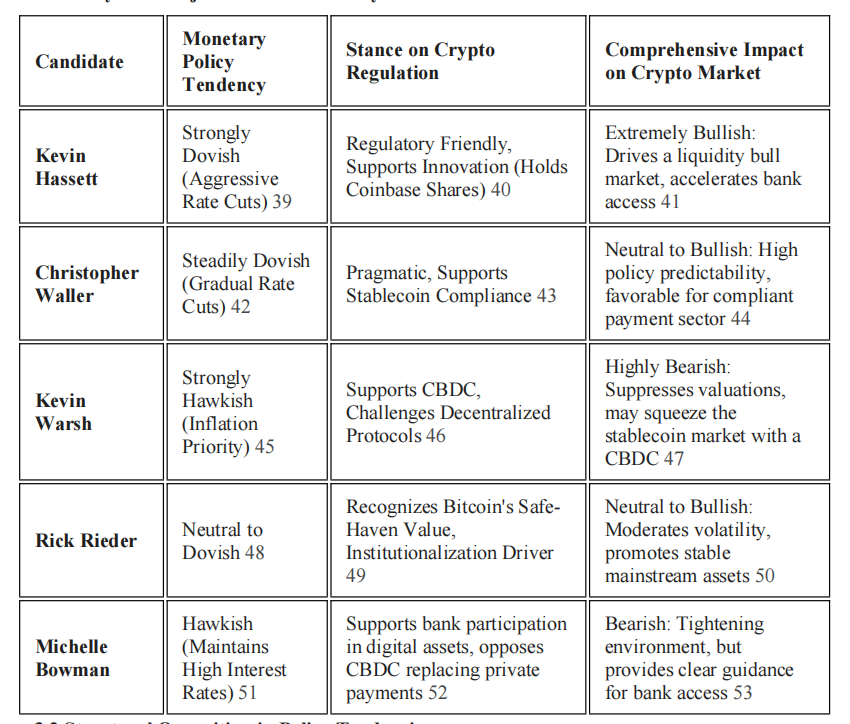U.S. Senate Shifts Focus to Crypto Market Structure in Regulatory Push
 2025/07/07 08:00
2025/07/07 08:00
- The Senate draft could change how crypto exchanges and DeFi platforms are managed.
- Crypto Week will see House votes on stablecoin token oversight and CBDC restrictions.
- Lawmakers aim to protect users and help new crypto projects follow clear legal rules.
The U.S. Senate has reignited its focus on crypto market structure, setting the stage for sweeping reforms across exchanges, DeFi platforms, and digital asset custody. This shift, driven by a new draft bill and an upcoming Senate hearing, may reshape federal oversight and redefine regulatory authority between the SEC and CFTC. As the House prepares for “Crypto Week,” earlier efforts like the GENIUS Act could either align with or clash against Senate priorities, impacting investor protections, innovation, and U.S. competitiveness.
The draft, expected later this week, aims to classify digital assets clearly and establish boundaries between commodities and securities. The structure also introduces safeguards for investors and institutions alike. It incorporates parts of the 2023 Lummis-Gillibrand Responsible Financial Innovation Act and reflects themes found in the House’s CLARITY Act. Senators Tim Scott, Cynthia Lummis, Thom Tillis, and Bill Hagerty released bipartisan “crypto market structure principles” on June 24, calling for clear jurisdiction, innovation support, and targeted AML enforcement.
According to a recent report from, Ripple CEO Brad Garlinghouse is scheduled to testify at the Senate hearing, offering insight from one of the industry’s largest players. The final draft is targeted for completion by August, with a Senate vote anticipated by September, matching the White House’s timeline for faster crypto rulemaking.
Crypto Week Brings House and Senate Agendas to a Crossroads
As the Senate builds its market structure blueprint, the House is preparing for “Crypto Week,” a concentrated legislative session from July 14 to 18. Three key bills will be considered: the CLARITY Act, the GENIUS Act, and the Anti-CBDC Surveillance State Act. These efforts aim to align U.S. crypto policy, but differences in approach may raise friction between chambers.
The GENIUS Act, already passed by the Senate on June 17 with a 68–30 vote, outlines strict standards for stablecoins, including 1:1 asset backing, AML compliance, and audit rules based on issuer size. It also contains language barring the Federal Reserve from issuing a central bank digital currency.
Meanwhile, Representative Tom Emmer’s Anti-CBDC bill, which similarly blocks Fed-led digital currency development, will be voted on separately during Crypto Week. These overlapping provisions highlight the urgency of aligning agency boundaries and crypto definitions before divergent frameworks take hold.
In parallel, the House Ways and Means Oversight Subcommittee is expected to reschedule a digital asset tax policy hearing. Originally slated for this week, the session was postponed but is expected to proceed soon after Crypto Week.
Related: South Korea’s FIU Launches AML Measures Against Crypto Fraud
Investor Protections and Innovation Tools at the Core
The draft bill provided by the Senate pays attention to the protection of investors and stimulates innovation to be achieved on both institutional and decentralized platforms. It establishes asset, issuer, and custodian category items and provides regulatory certainty that has lacked in U.S. policy. Some of the important protection tools are AML provisions, reserve requirements, and redemption rights to the users. These would minimize the risk of fraud, as well as render platforms secure to both individual and corporate players.
To support innovation, the draft also includes no-action letters, regulatory sandboxes, and legal safe harbors. These elements are critical for DeFi developers to test systems while remaining in regulatory bounds.
The House legislation is basically an idea for the Senate bill that gives the primary oversight of the exchanges to the CFTC. This plan emerged to resolve the ongoing dispute with regard to jurisdiction over digital assets between the CFTC and the SEC. However, since then, Senate Democrats have started raising concerns regarding consumer protections and conflicts regarding President Donald Trump’s crypto ventures, which may weigh in on the implementing language.
The post U.S. Senate Shifts Focus to Crypto Market Structure in Regulatory Push appeared first on Cryptotale.
Disclaimer: The content of this article solely reflects the author's opinion and does not represent the platform in any capacity. This article is not intended to serve as a reference for making investment decisions.
You may also like
Economic Truth: AI Drives Growth Alone, Cryptocurrency Becomes a Political Asset
The article analyzes the current economic situation, pointing out that AI is the main driver of GDP growth, while other sectors such as the labor market and household finances are in decline. Market dynamics have become detached from fundamentals, with AI capital expenditure being key to avoiding a recession. The widening wealth gap and energy supply are becoming bottlenecks for AI development. In the future, AI and cryptocurrencies may become the focus of policy adjustments. Summary generated by Mars AI This summary was generated by the Mars AI model, and its accuracy and completeness are still in the process of iterative improvement.

AI unicorn Anthropic accelerates IPO push, taking on OpenAI head-to-head?
Anthropic is accelerating its expansion into the capital markets, initiating collaboration with top law firms, which is seen as an important signal toward going public. The company's valuation is approaching 300 billions USD, and investors are betting it could go public before OpenAI.
Did top universities also get burned? Harvard invested $500 million heavily in bitcoin right before the major plunge
Harvard University's endowment fund significantly increased its holdings in bitcoin ETFs to nearly 500 million USD in the previous quarter. However, in the current quarter, the price of bitcoin subsequently dropped by more than 20%, exposing the fund to significant timing risk.

The Structural Impact of the Next Federal Reserve Chair on the Cryptocurrency Industry: Policy Shifts and Regulatory Reshaping
The change of the next Federal Reserve Chair is a decisive factor in reshaping the future macro environment of the cryptocurrency industry.
